36 CFR Part 1194 - Proposed Information and Communication Technology (ICT) Standards and Guidelines NPRM
CHAPTER 4: HARDWARE
401.1 Scope.
The requirements of Chapter 4 shall apply to ICT that is hardware where required by 508 Chapter 2 (Scoping Requirements), 255 Chapter 2 (Scoping Requirements), and where otherwise referenced in any other chapter of the 508 Standards or 255 Guidelines.
EXCEPTION: Hardware that is assistive technology shall not be required to conform to the requirements of this chapter.
402.1 General.
Except for personal headsets and other audio couplers, closed functionality of ICT shall be operable without requiring the user to attach or install assistive technology and shall conform to 402.
402.2 Speech-Output Enabled.
ICT with a display screen shall be speech-output enabled. Operating instructions and orientation, visible transaction prompts, user input verification, error messages, and all displayed information for full use shall be accessible to, and independently usable by, individuals with vision impairments. Speech output shall be delivered through a mechanism that is readily available to all users, including, but not limited to, an industry standard connector or a telephone handset. Speech shall be recorded or digitized human, or synthesized. Speech output shall be coordinated with information displayed on the screen.
EXCEPTIONS: 1. Audible tones shall be permitted instead of speech where the content of user input is not displayed as entered for security purposes, including, but not limited to, asterisks representing personal identification numbers.
2. Advertisements and other similar information shall not be required to be audible unless conveying information necessary for the transaction being conducted.
402.2.1 User Control.
Speech output for any single function shall be automatically interrupted when a transaction is selected. Speech output shall be capable of being repeated and paused.
402.2.2 Braille Instructions.
Where speech output is required by 402.2, braille instructions for initiating the speech mode of operation shall be provided. Braille shall conform to 36 CFR Part 1191, Appendix D, Section 703.3.
402.3 Volume.
ICT that delivers sound, including speech required by 402.2, shall provide volume control and output amplification conforming to 402.3.
EXCEPTION: ICT conforming to 410.2 shall not be required to conform to 402.3.
402.3.1 Private Listening.
Where ICT provides private listening, it shall provide a mode of operation for controlling the volume and a means for effective magnetic wireless coupling to hearing technologies.
402.3.2 Non-private Listening.
Where ICT provides non-private listening, incremental volume control shall be provided with output amplification up to a level of at least 65 dB. Where the ambient noise level of the environment is above 45 dB, a volume gain of at least 20 dB above the ambient level shall be user selectable. A function shall be provided to automatically reset the volume to the default level after every use.
402.4 Characters.
At least one mode of characters displayed on the screen shall be in a sans serif font. Where ICT does not provide a screen enlargement feature, characters shall be 3/16 inch (4.8 mm) high minimum based on the uppercase letter “I”. Characters shall contrast with their background with either light characters on a dark background or dark characters on a light background.
403.1 General.
Biometrics shall not be the only means for user identification or control.
EXCEPTION: Where at least two biometric options that use different biological characteristics are provided, ICT shall be permitted to use biometrics as the only means for user identification or control.
404.1 General.
ICT that transmits or converts information or communication shall not remove non-proprietary information provided for accessibility or shall restore it upon delivery.
405.1 General.
Where ICT emits lights in flashes, there shall be no more than three flashes in any one-second period.
EXCEPTION: Flashes that do not exceed the general flash and red flash thresholds defined in WCAG 2.0 (incorporated by reference in Chapter 1) are not required to conform to 405.
406.1 General.
Where data connections used for input and output are provided, at least one of each type of connection shall conform to industry standard non-proprietary formats.
407.1 General.
Where provided, operable parts of ICT shall conform to 407.
407.2 Contrast.
Where provided, keys and controls shall contrast visually from background surfaces. Characters and symbols shall contrast visually from background surfaces with either light characters or symbols on a dark background or dark characters or symbols on a light background.
407.3 Tactilely Discernible.
At least one tactilely discernible input control shall be provided for each function and shall conform to 407.3.
EXCEPTION: Devices for personal use with input controls that are audibly discernable without activation and operable by touch shall not be required to be tactilely discernible.
407.3.1 Identification.
Input controls shall be tactilely discernible without activation and operable by touch. Where provided, key surfaces outside active areas of the display screen shall be raised above surrounding surfaces.
407.3.2 Alphabetic Keys.
Where provided, individual alphabetic keys shall be arranged in a QWERTY keyboard layout and the “F” and “J” keys shall be tactilely distinct from the other keys. Where the ICT provides an alphabetic overlay on numeric keys, the relationships between letters and digits shall conform to ITU-T Recommendation E.161 (incorporated by reference in Chapter 1).
407.3.3 Numeric Keys.
Where provided, numeric keys shall be arranged in a 12-key ascending or descending keypad layout. The number five key shall be tactilely distinct from the other keys.
407.4 Key Repeat.
Where a keyboard with key repeat is provided, the delay before the key repeat feature is activated shall be fixed at, or adjustable to, 2 seconds minimum.
407.5 Timed Response.
Where a timed response is required, the user shall be alerted visually, as well as by touch or sound, and shall be given the opportunity to indicate that more time is needed.
407.6 Status Indicators.
Status indicators, including all locking or toggle controls or keys (e.g., Caps Lock and Num Lock keys), shall be discernible visually and by touch or sound.
407.7 Color.
Color coding shall not be used as the only means of conveying information, indicating an action, prompting a response, or distinguishing a visual element.
407.8 Audio Signaling.
Audio signaling shall not be used as the only means of conveying information, indicating an action, or prompting a response.
407.9 Operation.
At least one mode of operation shall be operable with one hand and shall not require tight grasping, pinching, or twisting of the wrist. The force required to activate operable parts shall be 5 pounds (22.2 N) maximum.
407.10 Privacy.
The same degree of privacy of input and output shall be provided to all individuals. When speech output required by 402.2 is enabled, the screen shall not blank automatically.
407.11 Keys, Tickets, and Fare Cards.
Where keys, tickets, or fare cards are provided, keys, tickets, and fare cards shall have an orientation that is tactilely discernible if orientation is important to further use of the key, ticket, or fare card.
407.12 Reach Height.
At least one of each type of operable part of stationary ICT shall be at a height conforming to 407.12.2 or 407.12.3 according to its position established in 407.12.1 for a side reach or a forward reach.
407.12.1 Vertical Reference Plane.
Operable parts shall be positioned for a side reach or a forward reach determined with respect to a vertical reference plane. The vertical reference plane shall be located in conformance to 407.12.2 or 407.12.3.
407.12.1.1 Vertical Plane for Side Reach.
Where a side reach is provided, the vertical reference plane shall be 48 inches (1220 mm) long minimum.
407.12.1.2 Vertical Plane for Forward Reach.
Where a forward reach is provided, the vertical reference plane shall be 30 inches (760 mm) long minimum.
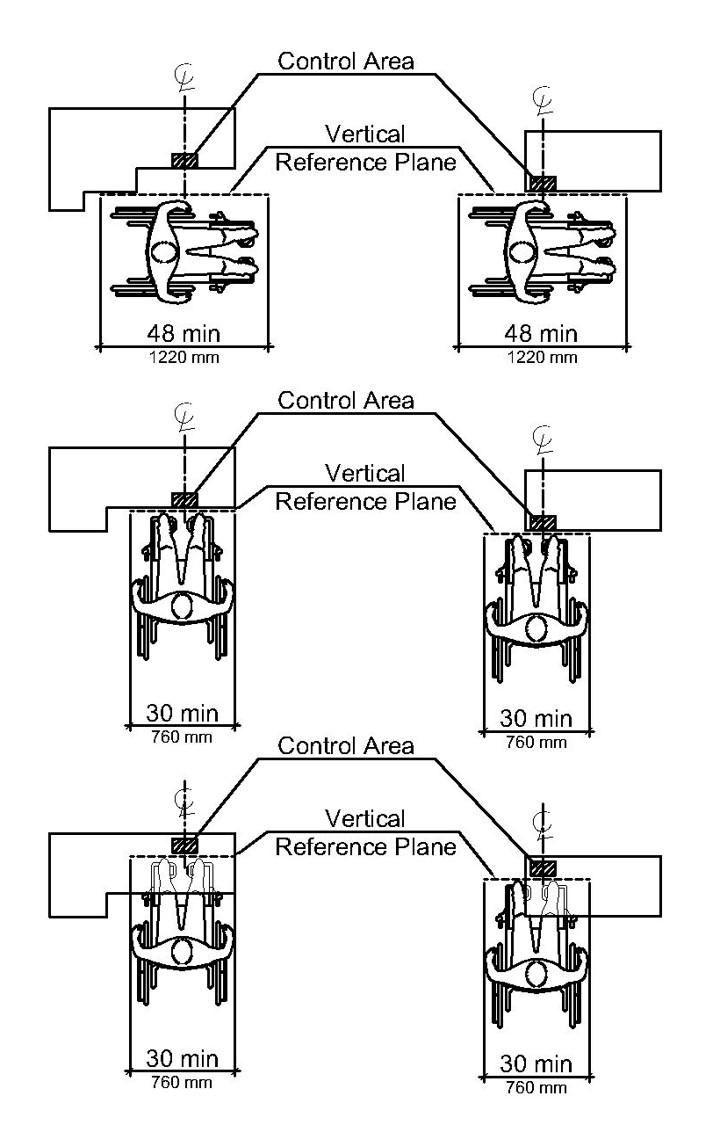
Figure 407.12.1
407.12.2 Side Reach.
Operable parts of ICT providing a side reach shall conform to 407.12.2.1 or 407.12.2.2. The vertical reference plane shall be centered on the operable part and placed at the leading edge of the maximum protrusion of the ICT within the length of the vertical reference plane. Where a side reach requires a reach over a portion of the ICT, the height of that portion of the ICT shall be 34 inches (865 mm) maximum.
407.12.2.1 Unobstructed Side Reach.
Where the operable part is located 10 inches (255 mm) or less beyond the vertical reference plane, the operable part shall be 48 inches (1220 mm) high maximum and 15 inches (380 mm) high minimum above the floor.
Figure 407.12.2.1
407.12.2.2 Obstructed Side Reach.
Where the operable part is located more than 10 inches (255 mm), but not more than 24 inches (610 mm), beyond the vertical reference plane, the height of the operable part shall be 46 inches (1170 mm) high maximum and 15 inches (380 mm) high minimum above the floor. The operable part shall not be located more than 24 inches (610 mm) beyond the vertical reference plane.
Figure 407.12.2.2
407.12.3 Forward Reach.
Operable parts of ICT providing a forward reach shall conform to 407.12.3.1 or 407.12.3.2. The vertical reference plane shall be centered, and intersect with, the operable part. Where a forward reach allows a reach over a portion of the ICT, the height of that portion of the ICT shall be 34 inches (865 mm) maximum.
407.12.3.1 Unobstructed Forward Reach.
Where the operable part is located at the leading edge of the maximum protrusion within the length of the vertical reference plane of the ICT, the operable part shall be 48 inches (1220 mm) high maximum and 15 inches (380 mm) high minimum above the floor.
Figure 407.12.3.1
407.12.3.2 Obstructed Forward Reach.
Where the operable part is located beyond the leading edge of the maximum protrusion within the length of the vertical reference plane, the operable part shall conform to 407.12.3.2. The maximum allowable forward reach to an operable part shall be 25 inches (635 mm).
Figure 407.12.3.2
The height of the operable part shall conform to Table 407.12.3.2.1.
Table 407.12.3.2.1 Operable Part Height
Figure 407.12.3.2.1
407.12.3.2.2 Knee and Toe Space.
Knee and toe space under ICT shall be 27 inches (685 mm) high minimum, 25 inches (635 mm) deep maximum, and 30 inches (760 mm) wide minimum and shall be clear of obstructions.
EXCEPTIONS:1. Toe space shall be permitted to provide a clear height of 9 inches (230 mm) minimum above the floor and a clear depth of 6 inches (150 mm) maximum from the vertical reference plane toward the leading edge of the ICT.
2. At a depth of 6 inches (150 mm) maximum from the vertical reference plane toward the leading edge of the ICT, space between 9 inches (230 mm) and 27 inches (685 mm) minimum above the floor shall be permitted to reduce at a rate of 1 inch (25 mm) in depth for every 6 inches (150 mm) in height.
Figure 407.12.3.2.2
Figure 407.12.3.2.2 Exception 1
Figure 407.12.3.2.2 Exception 2
Figure 407.12.3.2.2 with both Exceptions applied
408.1 General.
Where stationary ICT provides one or more display screens, at least one of each type of display screen shall be visible from a point located 40 inches (1015 mm) above the floor space where the display screen is viewed.
409.1 General.
Where transactional outputs are provided by ICT with speech output, the speech output shall audibly provide all information necessary to complete or verify a transaction.
EXCEPTIONS: 1. Machine location, date and time of transaction, customer account number, and the machine identifier shall not be required to be audible.
2. Duplicative information shall not be required to be repeated where such information has already been presented audibly.
3. Itineraries, maps, checks, and other visual images shall not be required to be audible.
410.1 General.
ICT that provides two-way voice communication shall conform to 410.
410.2 Volume Gain.
Volume gain shall be provided and shall conform to 47 CFR 68.317.
410.3 Magnetic Coupling.
Where ICT delivers output by an audio transducer that is typically held up to the ear, ICT shall provide a means for effective magnetic wireless coupling to hearing technologies, such as hearing aids, cochlear implants, and assistive listening devices.
410.4 Minimize Interference.
ICT shall reduce interference with hearing technologies to the lowest possible level and shall conform to 410.4.
410.4.1 Wireless Handsets.
ICT in the form of wireless handsets shall conform to ANSI/IEEE C63.19-2011 (incorporated by reference in Chapter 1).
410.4.2 Digital Wireline.
ICT in the form of digital wireline devices shall conform to TIA 1083 (incorporated by reference in Chapter 1).
410.5 Digital Encoding of Speech.
ICT shall transmit and receive speech that is digitally encoded in the manner specified by ITU-T Recommendation G.722 (incorporated by reference in Chapter 1) for encoding and storing audio information.
EXCEPTION: Where ICT is a closed system, conformance to standards other than ITU-T Recommendation G.722 shall be permitted where equivalent or better acoustic performance is provided and where conversion to ITU-T Recommendation G.722 at the borders of the closed system is supported.
410.6 Real-Time Text Functionality.
Where ICT provides real-time voice communication, ICT shall support real-time text functionality and shall conform to 410.6.
410.6.1 Display of Real-Time Text.
Where provided, multi-line displays shall be compatible with real-time text systems used on the network.
410.6.2 Text Generation.
Where provided, features capable of text generation shall be compatible with real-time text systems used on the network.
410.6.3 Interoperability.
Where ICT interoperates outside of a closed system of which it is a part, or where ICT connects to other systems, ICT shall conform to 410.6.3.1 or 410.6.3.2.
410.6.3.1 PSTN.
Where ICT interoperates with the Public Switched Telephone Network (PSTN), real-time text shall conform to TIA 825-A (incorporated by reference in Chapter 1).
410.6.3.2 VoIP Using SIP.
Where ICT interoperates with Voice over Internet Protocol (VoIP) products or systems using Session Initiation Protocol (SIP), real-time text shall conform to RFC 4103 (incorporated by reference in Chapter 1).
410.6.4 Voice Mail, Auto-Attendant, and IVR Compatibility.
Where provided, voice mail, auto-attendant, and interactive voice response telecommunications systems shall be compatible with real-time text that conforms to 410.6.3.
410.6.5 HCO and VCO Support.
Real-time voice communication shall permit users to intermix speech with the use of real-time text and shall support modes that are compatible with Hearing Carry Over (HCO) and Voice Carry Over (VCO).
410.7 Caller ID.
Where provided, caller identification and similar telecommunications functions shall be visible and audible.
410.8 Video Communication.
Where ICT provides real-time video functionality, the quality of the video shall be sufficient to support communication using sign language.
411.1 General.
Where ICT displays or processes video with synchronized audio, ICT shall conform to 411.1.1 or 411.1.2.
411.1.1 Decoding of Closed Captions.
Players and displays shall decode closed caption data and support display of captions.
411.1.2 Pass-Through of Closed Caption Data.
Cabling and ancillary equipment shall pass through caption data.
412.1 General.
Where ICT displays or processes video with synchronized audio, ICT shall provide a mode of operation that plays associated audio description.
412.1.1 Digital Television Tuners.
Where audio description is played through digital television tuners, the tuners shall conform to ATSC A/53 Digital Television Standard, Part 5 (2010) (incorporated by reference in Chapter 1). Digital television tuners shall provide processing of audio description when encoded as a Visually Impaired (VI) associated audio service that is provided as a complete program mix containing audio description according to the ATSC A/53 standard.
413.1 General.
Where ICT displays video with synchronized audio, ICT shall provide user controls for closed captions and audio description conforming to 413.1.
EXCEPTION: Devices for personal use where closed captions and audio description can be enabled through system-wide platform settings shall not be required to conform to 413.1.
413.1.1 Caption Controls.
ICT shall provide user controls for the selection of captions in at least one location that is comparable in prominence to the location of the user controls for volume.
413.1.2 Audio Description Controls.
ICT shall provide user controls for the selection of audio description in at least one location that is comparable in prominence to the location of the user controls for program selection.

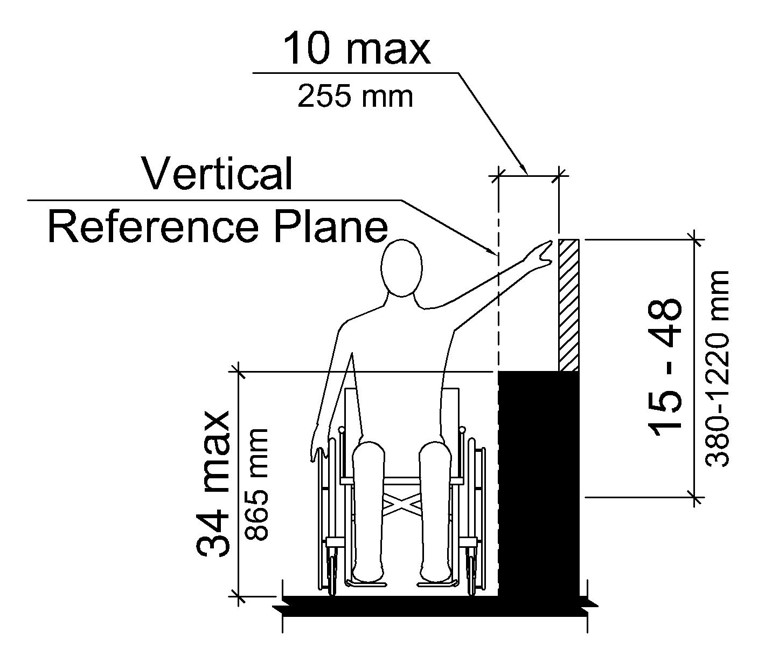
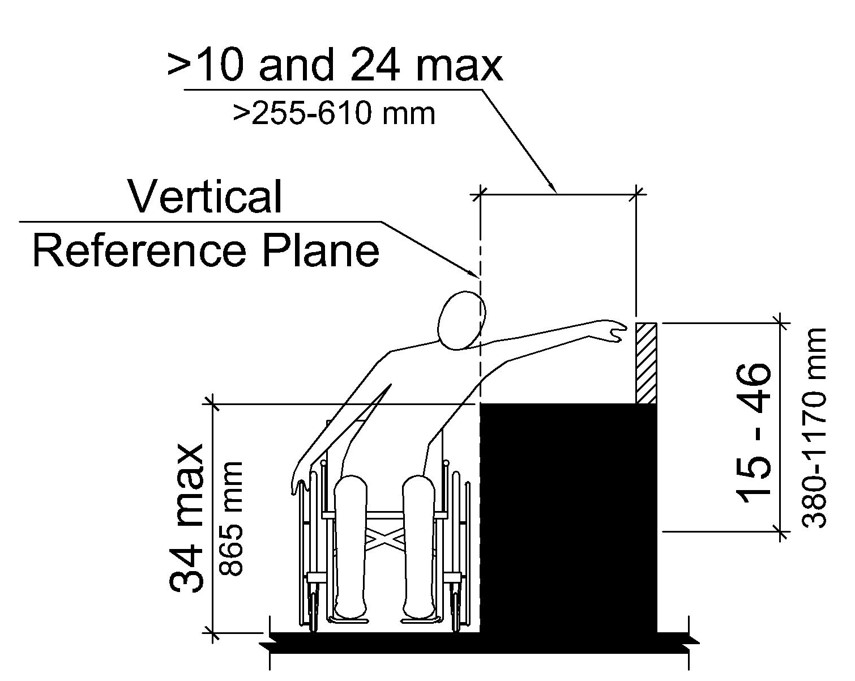
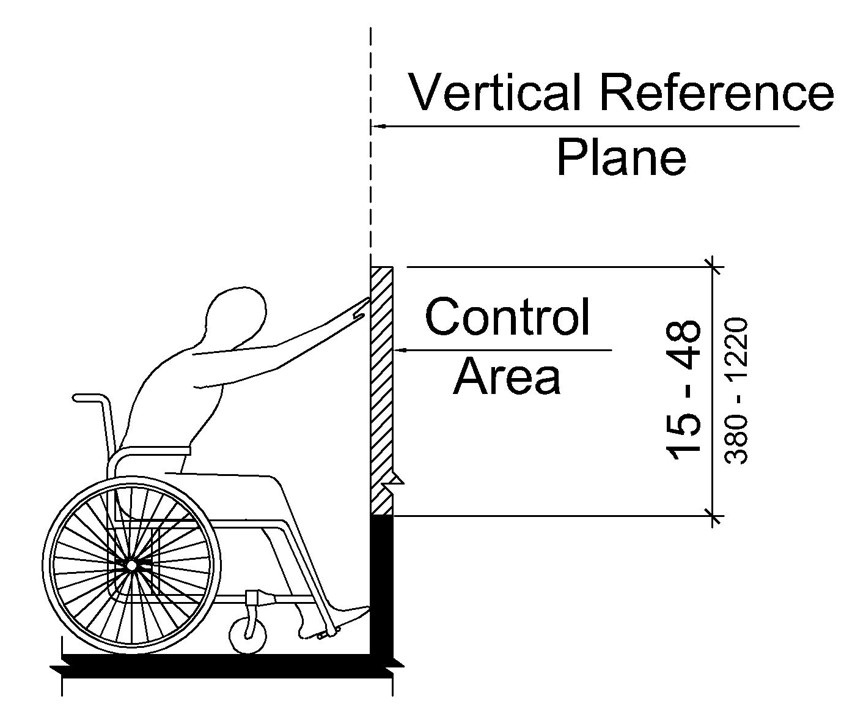
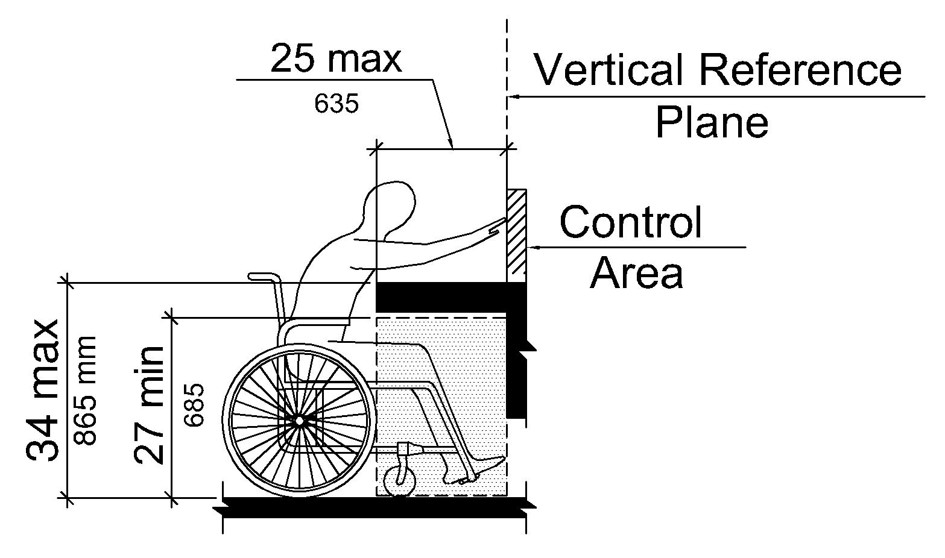

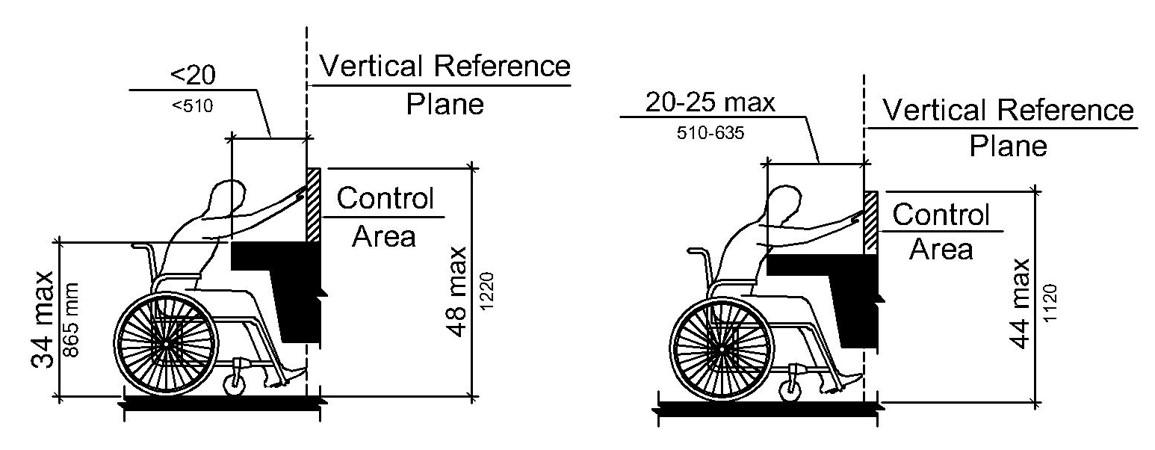
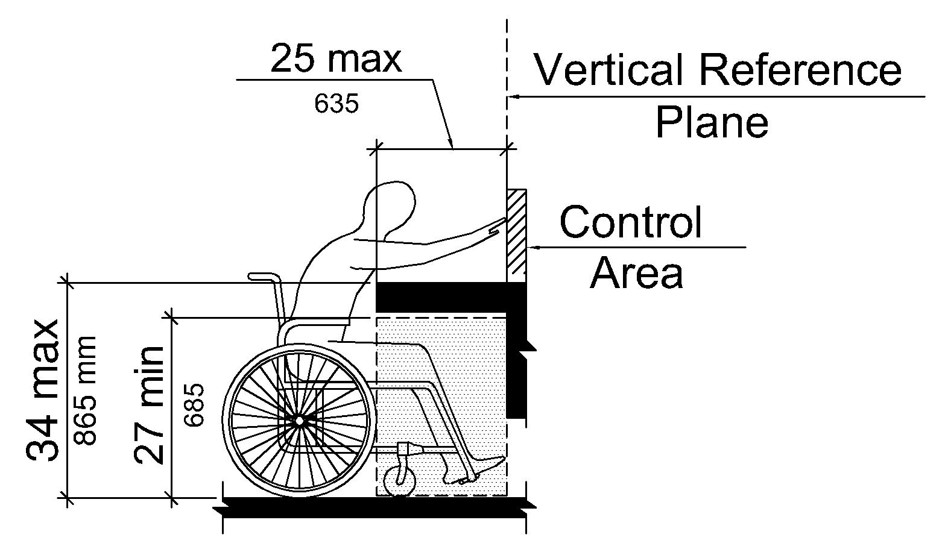
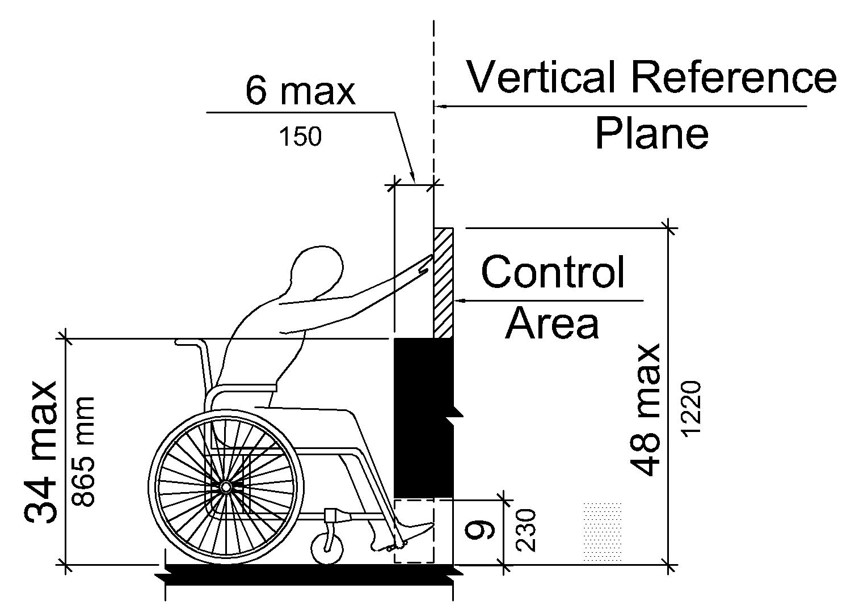
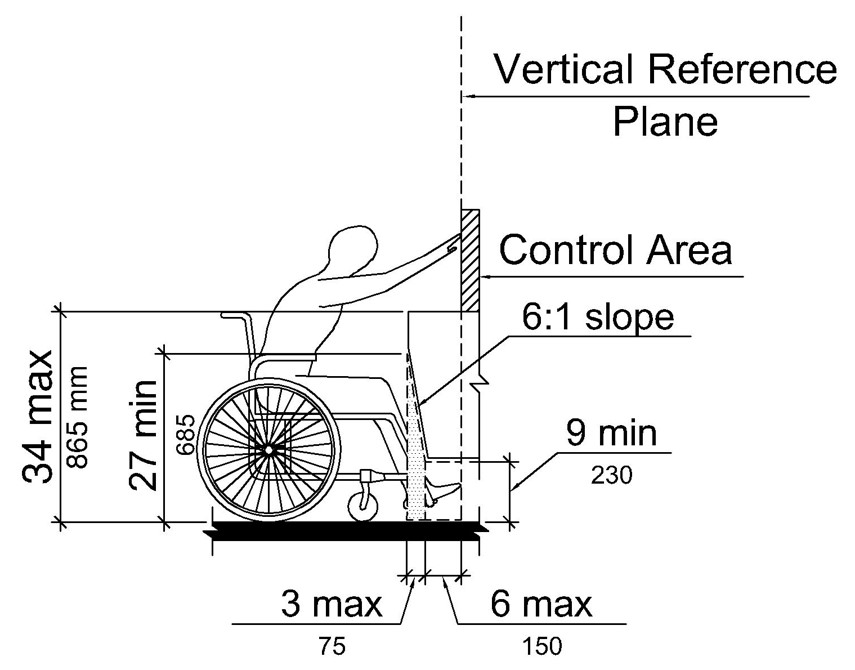
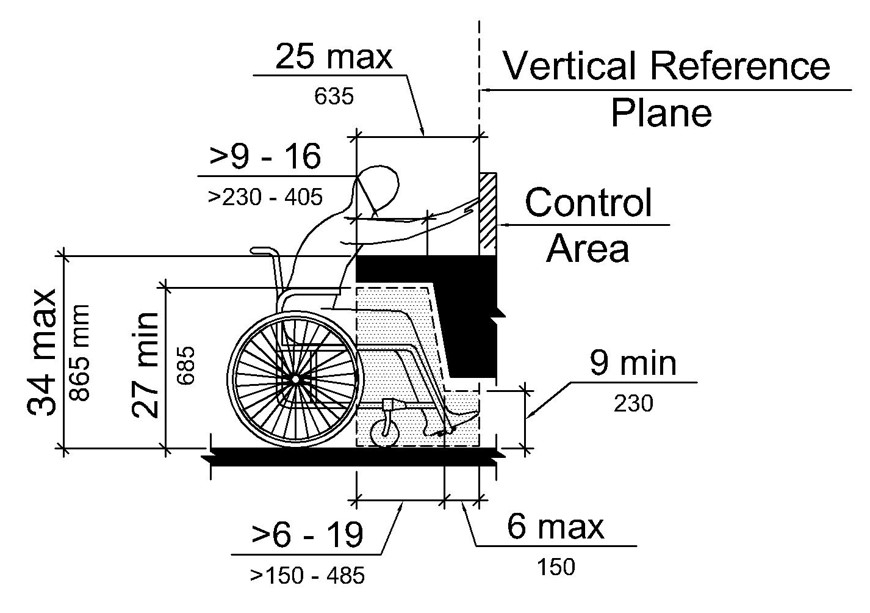
User Comments/Questions
Add Comment/Question